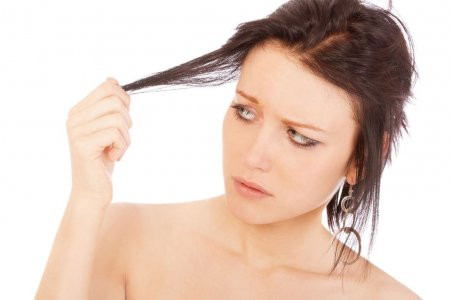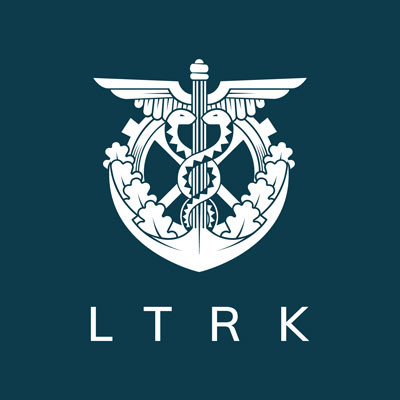How to treat a hair loss?
Hair is perhaps one of the most striking features of a person’s appearance. While a voluminous hairstyle can add a few points to anyone's attractiveness, dull and sparse hair, on the contrary, threatens to strip away charm even from someone with the most perfect facial features and glowing skin.
For this reason, hair loss is primarily considered by ordinary people as an aesthetic flaw that undermines self-esteem, even for those who are quite confident in their own attractiveness. However, according to experts, a decrease in hair density can also indicate serious health problems. Only a good trichologist can help diagnose the issue and recommend an appropriate solution to hair loss.
What could cause hair loss, and when is treatment necessary?
If you notice more hair than usual on your comb or pillow, it’s time to think about it. Naturally, hair always falls out — it's a natural process, but the loss is usually so minimal (up to 100 hairs per day) that it rarely raises concerns. However, there are many causes for pathological hair loss. For example, women often notice this during breastfeeding, hormonal changes, stress, or serious chronic illnesses. Men’s situation is a bit more complicated; they rarely consult a doctor for what they consider “minor” issues, such as diffuse alopecia, which first manifests moderately. Typically, they seek help for hereditary androgenetic alopecia, where hair loss occurs in characteristic areas — the forehead and crown. Without a doubt, all forms of hair loss should be addressed, and there's no reason to delay visiting a doctor, as advanced alopecia is always harder to treat than the early stages.
Which specialist should you first consult?
Sometimes patients think that a trichologist is a specialist who deals exclusively with hair and knows nothing about other health issues. In practice, the opposite is true — since hair loss can be caused by many different ailments, this doctor is inevitably required to have knowledge in all medical fields, from endocrinology and gastroenterology to cardiology and neurology. Additionally, trichologists need to be somewhat psychologists because patients often fail to mention important life circumstances that could significantly affect hair health, and the doctor must gather the patient's history piece by piece. Of course, the trichologist will not treat all the diseases that can cause alopecia but will recommend which specialists (endocrinologists, gynecologists, dermatologists) to visit if necessary. If hair loss is entirely within the trichologist’s expertise, they will suggest the best solution.
It’s interesting
Contrary to stereotypes, not all diseases of the scalp are accompanied by hair loss. For example, in psoriasis, only the skin under the hair is affected, while the hair follicles remain intact. However, any skin diseases require a consultation with a dermatologist, as alopecia can result from improper treatment.
How does hair loss treatment usually begin?
Attempting to treat hair without a full diagnosis of the causes of hair loss means risking both time and money. This is the downside of trying to address the symptom independently — in most cases, it’s hard to confidently pinpoint the cause of hair loss. The exception might be chemotherapy for cancer or an extremely strict diet for weight loss. However, even in the latter case, confirming a direct link between diet and hair condition is up to the doctor, as it’s more likely due to vitamin deficiencies or imbalances in proteins, carbohydrates, or fats in the diet. For instance, excessive hair loss can occur with strict vegetarian diets or avoidance of foods rich in vitamins A, B1, B2, PP (legumes, carrots, vegetable oils).
Diagnostic tests such as trichograms, phototrichograms, studying hair under a Wood's lamp, and spectral analysis are only available in a trichologist's office. Based on the survey and examination, the doctor will suggest additional tests that should be done in a lab.
Can the problem be solved at home?
Let’s be honest — few people like going to doctors, especially when it comes to narrow specialists who are hard to see under an insurance policy. Manufacturers of various hair loss treatments are well aware of this, which is why miracle shampoos for alopecia can be bought at any pharmacy, and you’ll find thousands of folk recipes online, varying in effectiveness and safety. Of course, if it's a mild form of hair loss, such as during the spring period, after stress, or after a poor haircut, it’s possible to attempt a solution without medical supervision, ensuring proper scalp care. This includes products that improve nourishment and stimulate blood circulation in this area (for example, zinc-based products, nettle and burdock extracts), which can extend the hair’s life cycle and stimulate new hair growth.
However, remember that you will still be working somewhat blindly: the ingredients in mass-produced shampoos and hair masks can vary significantly, and what worked for your friend or relative might not work for you, as hair loss causes differ and each person’s condition is unique. For this reason, it’s difficult to definitively identify good or bad brands, but it’s advisable to trust well-known and respected manufacturers that conduct clinical trials on their products and can justify the composition of the product, rather than relying on vague claims like "strengthens hair," which can mean anything.
Are there effective medications for treating hair loss?
If pharmacologists had invented a pill to stop hair loss, we would likely see fewer people with bald spots or thinning hair. Unfortunately, there is no universal pill for alopecia, although in some cases, hormone treatments can help with androgenetic alopecia. Vitamin and mineral complexes (especially those containing vitamins B, A, E, PP, and selenium) can be helpful in chronic illnesses and stress. Antifungal and other non-hormonal ointments can treat dermatological diseases that cause hair loss.
When can you turn to “salon” treatments?
Cosmetic treatments are a compromise between using medications and "heavy artillery," such as hair transplant surgeries. Techniques like mesotherapy and certain physiotherapeutic methods can indeed improve hair follicle nourishment — more effectively than shampoos or vitamins. However, serious conditions like hereditary androgenetic alopecia, patchy alopecia, or scar alopecia (where hair does not grow at the site of a scar or burn) are not resolved by these methods. Some patients may be drawn to trichopigmentation — scalp tattooing that creates the illusion of short stubble or masks small bald areas. If the hair loss has stopped but the hair has become very thin, a good hairstylist might suggest lamination to add volume. However, it’s important to understand that these are not treatments but cosmetic solutions, and there’s no guarantee that in a few years, you won’t opt for a transplant.
How to treat serious pathologies accompanied by hair loss?
The problem with severe alopecia is that the hair follicles close, and no matter what you do, the hair will never grow back from them. Therefore, androgenetic alopecia — if the patient arrives with bald spots instead of at the early stages of the disease when the process can still be stopped — as well as scar and patchy alopecia, are effectively treated only through transplantation.
What hair transplant methods are used today?
Hair transplantation is a relatively “young” procedure, but it is improving year after year. Once, the only method was the transplantation of whole skin flaps, such as from the back of the head to the forehead — the STRIP method. This operation was quite traumatic and required a long recovery (up to six months), leaving behind ugly scars that had to be hidden under long hair. Some might think of it as a form of plastic surgery. The most modern method is FUE, in which both the extraction and implantation of follicles are done manually with special microscopic tools, resulting in several benefits. First, it’s less painful and traumatic. Second, the success rate of "surviving" transplanted hair is higher (up to 98%), and they will continue to grow in the right place for the rest of the person’s life. Finally, FUE allows for the desired hair density and a natural-looking hairstyle, as the hair is placed at the correct angle in the skin and grows evenly, rather than in clumps. This procedure has also made it possible to transplant hair to the face — mustache and beard areas, where imperfections are noticeable right away.
Are there any contraindications for the operation, and is it safe?
Unlike the STRIP method, FUE has almost no contraindications, except for acute infectious diseases, which generally do not favor any plastic interventions. Our patients range in age from 18 (the legal minimum) to any advanced age. Hair transplantation is completely safe, provided you go to a good clinic that follows all sanitation standards, and the doctors have the appropriate diplomas and certifications.
What are the results of hair loss treatment through transplantation?
In all hair transplant options, the results are generally good. However, the quality of the new hairstyle depends on the method used. After STRIP transplantation, the hair will be fairly thin (up to 40 follicles per cm²), and scars will remain where the hair was taken and implanted. After FUE, the results are much better (up to 80 follicles per cm²), to the point where even close family members wouldn't guess you had the procedure — unless they saw you with bald spots before.
Rubenhair Baltics is the only leading hair transplant and skin rejuvenation clinic in the Baltic States, offering high-quality hair transplants using the FUE method, which involves follicle extraction without leaving scars or stitches. The clinic also performs eyebrow, eyelash, beard, and mustache transplants. Our clinic ensures high-quality, natural, and reliable results for both men and women.
Book an appointment with our doctors, who will provide comprehensive answers to all your questions and recommend the best course of treatment. Fill out the online form or call +371 26 7777 76. www.rubenhair.eu







